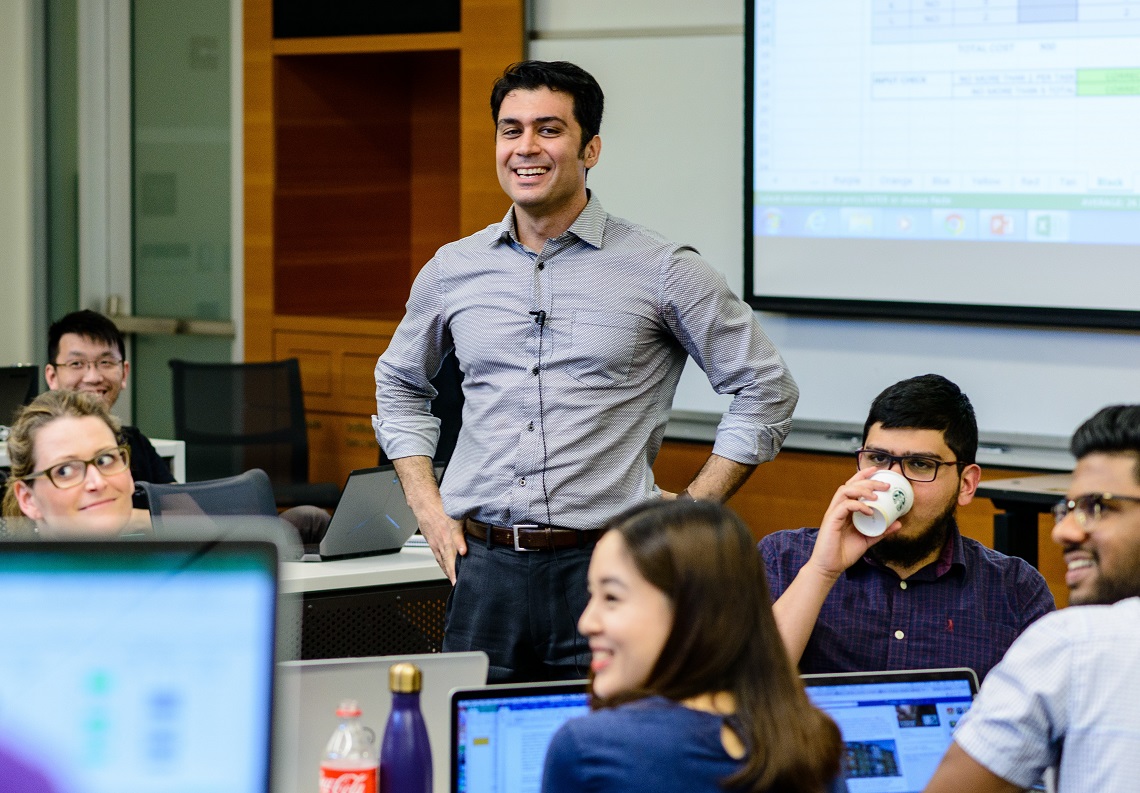Shoo, flu!
Smart vaccine subsidies could curb the spread of influenza
The flu. This annual respiratory ailment besets people with a litany of nasty symptoms, causes hundreds of thousands of deaths and incurs economic costs in the billions of dollars. A season facing a more virulent strain raises fears of border-jumping pandemics the likes of the 1918 Spanish flu that killed between 20 and 40 million people worldwide.
Modern vaccination campaigns have brought us a long way from those dark days. But an increasingly mobile, global population is still vulnerable.
Now a suite of studies co-authored by Hamed Mamani, an assistant professor of operations management at the University of Washington Foster School of Business, is offering supply-chain solutions to a complicated epidemiology conundrum: how to stem the spread of influenza.
Vaccine production
Vaccination is one of the most effective weapons for fighting influenza outbreaks. But many seasons are met by a shortage of doses—including each of the past ten years.
The problem? Flu vaccine is difficult to produce and deliver, while not being very profitable. As a result, drug manufacturers often set their production goals as low as public opinion will allow.

Given the ambiguous economics of vaccine production, Mamani and his co-authors developed a model that prescribes pre-season contracts between governments and flu vaccine manufacturers, providing a healthy financial incentive to produce sufficient doses.
“We found that incentivizing production with a financial risk-sharing agreement between government and manufacturers would lead to optimal benefit to the population,” Mamani says. “The upfront cost to stimulate vaccine production is far less than the potential loss from an insufficiently vaccinated population. Even without accurate estimates of an influenza’s virulence, having a contract will save a lot of money in the long run.”
Mamani’s paper, “Supply Chain Coordination and Influenza Vaccination,” with Stephen Chick of INSEAD and David Simchi-Leviz of MIT, was published in Operations Research in 2008.
Distribution and globalization
A second paper, currently under review at Operations Research, takes on the global epidemiology challenge of interdependent risk: the vaccination policy of one country influences infection outcomes in other countries, especially in the case of the “source” country from which a strain emerges.
Wealthier developed countries in North America and Europe do a decent job of vaccinating their populations. Developing countries do not. Yet those developing countries—particularly in regions of Southeast Asia—are where influenza usually starts. And its spread is exponential.
Mamani and his colleagues again look to more intelligent investment of government funds from developed countries such as the US, this time to subsidize vaccinations in poorer countries.
“Infections usually start in some country where there are no vaccinations, so it spreads rapidly there and to the rest of the world,” Mamani says. “But if we move the money around, subsidize vaccinations for those countries, we’re going to have a really good chance of containing the influenza—and probably any infectious disease. The US, paying for another country’s vaccines, is going to be better off in the long run.”
Public adoption
The US is one of the better vaccinated nations in the world. Yet far fewer people are immunized than the US Food and Drug Administration recommends to mitigate the risk of an epidemic and minimize the cost in dollars and deaths. The reason? Getting vaccinated costs time and money. Some believe it is ineffective or will actually bring on mild flu symptoms. Many people come to the logical conclusion that they don’t need to be immunized when others around them are.
But an optimally vaccinated population is vital to preventing epidemics.
Now Mamani is working with Debabrata Dey of the UW Foster School of Business and Elodie Adida of the University of Illinois at Chicago to demonstrate how a modest government subsidy to individuals prevents a far greater toll on the economy—even in a light flu season. Each infection costs an estimated 40 times the cost of each vaccination. Although the relationship is not one-to-one, it still produces a simple equation.
“If the government takes no action, we don’t reach the level of vaccination in the community that is desirable,” Mamani says. “But if the government steps in and subsidizes vaccination, we can reach the optimal level.”
A wise investment
In simple business applications, supply-chain operations follow linear models—produce one widget for $X, sell that widget for $Y and make $Z ($Y-$X) in profit. The reality of infectious disease, however, is that the variables are unpredictable and the effects are exponential. Both vaccinating and not vaccinating one person has multiplying effects.
By factoring these realities into their supply-chain models for flu vaccine production and dissemination, Mamani and his collaborators are moving rapidly toward a triple bottom line that offers wins to governments and public health providers, vaccine manufacturers and individuals. Even, he says, when the information is imperfect, as it always is in cases of infectious disease.
Mamani plans to continue honing the models, incorporating additional operational issues and realistic details until they are ready for implementation by public health organizations. “Once we have those parameters and the cooperation of forward-looking governments,” he says, “we can produce optimum results.”
